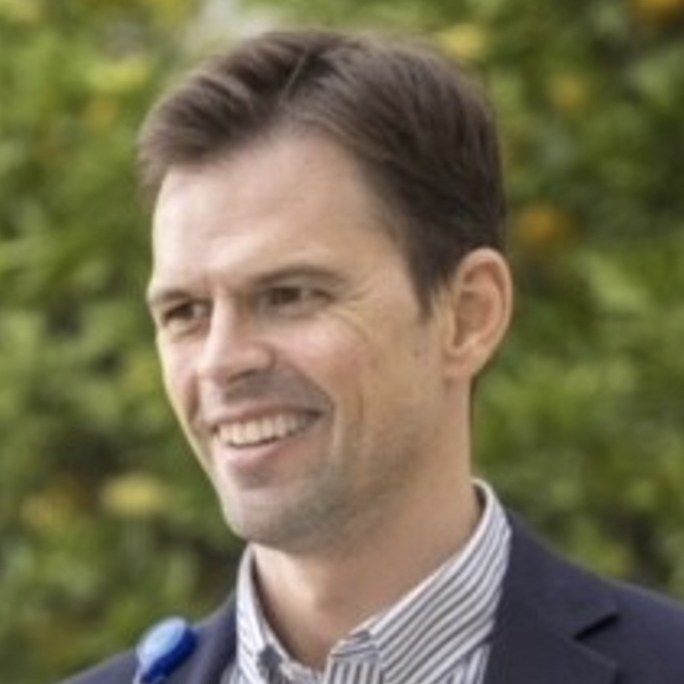This article was co-authored by Carole H. Browner, William I. Robinson, Aditi Bhargava, Lazlo Boros, Hugo Loaiciga, Roberto Strongman, Arvind Thomas, Anton Van Der Ven, Gabriel Vorobiof, and Patrick Whelan.
Introduction
A group of senior University of California professors was denied free speech and academic freedom by university administration and its nine student newspapers during the Covid-19 pandemic, furthering the university’s abominable policy of silencing all dissent, questioning, and criticisms of its draconian Covid policies. The system’s failure to allow public access to numerous highly credentialed scientific critiques of its scientifically unsubstantiated adoption of unproven, dangerous public health policies was blatant censorship causing immense mental, emotional, ethical, and physical suffering and harm. We write this article to caution the academic community to marshal its resolve to resist the silencing of scientific dissent and critique in the not unlikely event of future global emergencies.
Context
In December 2019, the China office of the World Health Organization (WHO) reported a “novel” type of pneumonia circulating in Wuhan. Just one month later, the WHO’s International Health Regulation Emergency Committee named it “2019 Novel Coronavirus” (SARS-CoV-2) and declared it a Public Health Emergency of International Concern (PHEIC, i.e., a pandemic), the strongest global alert they can issue. This PHEIC quickly led to cataclysmic global economic and social disruption.
International, national, and local media immediately stoked public fears of the virus’s massive lethality and lack of effective treatment. By March 2020, lockdowns, “social distancing,” and mandatory masking were haphazardly imposed despite a glaring lack of empirical evidence of their effectiveness. The result was nationwide confusion, chaos, and anger. Ferocious and vindictive actions were taken against individuals deemed out-of-compliance, including job terminations, arrests, fines, and prison sentences.
In December 2020, the FDA granted Emergency Use Authorizations for mRNA injections dubbed “vaccines.” The long-standing dictionary definition of a vaccine was itself changed to facilitate public acceptance of hastily-tested genetic mRNA technology that in previous decades failed to move beyond Phase 1 clinical trials for several serious infectious disease-causing viruses and bacteria, including influenza, Zika, and HIV (Feldman et al. 2019; ModernaTX 2010).
Curiously, in the United States, only mRNA Covid-19 vaccines were recognized despite the WHO approving and recognizing other Covid-19 vaccines. This policy forced vaccinated non-citizens from other countries to take two doses of mRNA vaccine if they wanted to enter the States, but citizens had no such requirement, further highlighting unscientific and irrational policies. An intensely unremitting global media campaign urged, cajoled, and coerced universal uptake for all ages, including pregnant women and young children (despite no reports of serious illness or death from Covid-19 in children under 18).
Government agencies and mass media became proxy advertisers/promoters for vaccine manufacturers’ initial claims that the shots were 95% “safe and effective,” not only to protect oneself but to prevent transmission to others. Simultaneously, cynical media campaigns vigorously protected Big Pharma advertisers by censoring and suppressing all questions and concerns about the products, including testing data, safety records, the speed and scale with which shots were deployed, selective reporting of adverse events, and the absence of explicit procedures for informed consent.
Jabs were administered at schools without parental consent, with children and minors offered cash and other incentives to submit. Big Pharma-influenced legacy and social media all but forbade public debate, and banished highly credentialed medical experts from their platforms for “spreading misinformation.”
Public health figures, politicians, and celebrities argued that those who refused the Covid-19 vaccines should be shamed, banished from society, forced into quarantine camps, denied food, and even left to die. Any report of death regardless of the cause of an unvaccinated individual was gleefully celebrated in mainstream media. An op-ed we published in the Baltimore Sun highlighted the societal implications of these vaccine mandates (Doshi and Bhargava 2021) including as a form of “institutional segregation.”
After billions worldwide had received one or more Covid shots, reports of adverse events on both VAERS (the US vaccine adverse events reporting system) and Great Britain’s Yellow Card Vaccine Reporting Site skyrocketed, and excess deaths among working-age populations in the most vaccinated countries rose by as much as 40%, the WHO finally ended the PHEIC declaration on May 5, 2023.
The University Response
On December 15, 2021, University of California President Michael V. Drake (coincidentally a Board Member of pharmaceutical giant Amgen) issued a Covid-19 Booster Mandate and Return to On-Site Operations requiring all students, staff, and faculty to be fully vaccinated against Covid-19, including boosters, if they wanted to set foot on campus during the 2022-2023 academic year. This redefined university policy from “fully vaccinated” to “ up to date,” suggesting innumerable boosters would be required in perpetuity.
We soon thereafter petitioned university administrators to reverse the mandate, or at least provide an exemption option (as was the case for all other vaccines). We presented substantial medical/scientific expertise disputing the need to vaccinate the naturally immune who had previously contracted and recovered from Covid-19, and were chagrined to receive no reply whatsoever.
Because the matter was literally one of life or death, we sought to publicize our findings via a guest editorial which, throughout March 2022, we sent to each of California’s major daily newspapers. With no response from any of them, we finally submitted our editorial to the university’s nine student-managed newspapers; we received expressions of interest only from UCLA’s Daily Bruin and UC Berkeley’s Daily Cal. Ultimately, after days of discussing and advising the intention to print, neither published the editorial, presumably, in the face of pressure from higher up to censor any coherent counter perspective. We subsequently posted our editorial online (Browner et al. 2022).
The information we sought to convey to the public was supported by highly authoritative sources including JAMA Cardiology, the New England Journal of Medicine, and the CDC’s Morbidity and Mortality Weekly Report. Our editorial would have reached a diverse audience of more than half a million Californians and possibly, motivated otherwise intimidated and silenced scientific, medical, and academic communities to wake up and ask tough questions.
Our editorial made it known that despite the university’s claim that the booster would protect against Covid-19 infection and prevent transmission, a mountain of studies proved otherwise. Many publications in top-tier journals, until then considered impactful, had failed to perform thorough research, some even including data from SARS-CoV-2 negative patients in their final analyses (Lucas et al. 2020).
A review of key data from early Covid-19 patients shed light on how critical opportunities were missed to understand the role of comorbidities and the distinctly negative effects of some early treatments such as Remdesivir (Bhargava and Knapp 2023). In a September 2022 article in the journal Vaccine (Serious adverse events of special interest following mRNA COVID-19 vaccination in randomized trials in adults, Fraiman et al. 2022), UC researchers Sander Greenland, Patrick Whelan, and other scientists lamented the lack of “full transparency of COVID-19 vaccine clinical trial data,” and called for a thorough harm-benefit analysis of them.
A long list of serious potentially deadly adverse events had already been acknowledged by the CDC, the FDA, the HHS, the WHO, health ministries, and medical researchers around the world – and even by principal manufacturer Pfizer! Our editorial highlighted mounting evidence of serious risks associated with mRNA vaccination, including myocarditis, pericarditis, cardiac arrest, and a higher risk of death in vaccinated individuals. Data from CDC’s VAERS released on July 15, 2022, showed a whopping 1,350,950 reports of adverse events for all age groups (more than 135 times the reporting rate for flu vaccines). It also included 29,635 deaths and 246,676 serious injuries.
It has further been well-documented that fewer than one percent of all vaccine-associated adverse events are reported to the CDC’s VAERS. This means that actual morbidity and mortality were likely many times greater, as pointed out by, among others, a then-recent HHS-funded Harvard Medical School vaccine injury study (Landofree 2021).
Prior to this pandemic, vaccine manufacturers sought to develop shots that mimicked natural immunity. Yet in the case of Covid-19 and in complete disregard of basic science and immunology, natural immunity was not recognized despite more than 150 peer-reviewed studies reporting that natural immunity acquired by recovering from SARS-CoV-2 infection was equal to if not superior to vaccination (Leon et al. 2022)
We noted that paradoxically, over time, Covid-19 shots increased rather than decreased the risk of contracting and spreading the virus (Tseng et al. 2023). Indeed, an article in The BMJ Global Health warned that “mandatory vaccine policies are scientifically questionable and likely to cause more societal harm than good (Bardosh et al. 2022).” We pointed out that the CDC and federal government had only “recommended” and not mandated the new booster, so the university’s decision to mandate exceeded even CDC/Federal guidelines (Team, Food, and Drug 2021). Finally, we argued that multiple data sources showed that young healthy people who contracted SARS-CoV-2 had a recovery rate of 99.995%!
We referenced a March 2022 court order compelling Pfizer to release 55,000 pages of internal reports on vaccine effectiveness and side effects that eventually revealed 1,246 different adverse effects including Guillain–Barré syndrome, cardiac arrest, deep vein thrombosis, immune-mediated hepatitis, myocarditis, brain stem embolism and thrombosis, interstitial lung disease, juvenile myoclonic epilepsy, liver injury, and multisystem inflammatory syndrome.
A preprint posted by Bardosh and colleagues (since accepted) found that 22,000-30,000 previously uninfected adults aged 18-29 would have to be boosted with an mRNA vaccine to prevent just one Covid hospitalization, that “booster mandates may cause a net expected harm: and that per COVID-19 hospitalization prevented in previously uninfected young adults, 18 to 98 serious adverse events” were anticipated (Bardosh et al. 2024).”
We explicitly stated that while we were not against vaccination for those who chose it, we were deeply concerned by the coercive nature of Covid-19 mandates. We emphasized that never before in medical history had an entire population been required to receive a vaccine approved only for emergency use, for which there was no long-term data, and no informed consent which, as a matter of law and ethics, requires that no one be coerced into a medical treatment.
We noted that the shift in UC policy from fully vaccinated to up-to-date signaled anticipation of an open-ended process of continuous vaccinations and boosters going far beyond addressing a temporary emergency. We protested that no exceptions were granted even for those who suffered serious adverse events from earlier Covid shots in blatant disregard of the “My body, my choice” stance taken by the medical community for other procedures.
Our editorial referenced the Los Angeles Unified School District (among others) having suspended its vaccine mandate for students and staff in September 2022, after a Superior Court judge ruled that the school district did not have the authority to mandate vaccination. We pointed out that the State of California had not mandated boosters for anyone except health workers, and that the nationwide trend was toward eliminating all mandates.
We affirmed that the rate of hospitalizations was radically down, that Covid-related deaths appeared to be about on par with annual deaths from the flu, and that in contrast, “excess,” and sudden, unexpected unexplained deaths had increased sharply since the rollout of the experimental vaccines (StatsCan 2023). We noted that even Bill Gates himself, having substantially financed and massively promoted the Covid vaccination campaign, acknowledged in an interview: “We didn’t understand that it’s a fairly low fatality rate and that it’s a disease mainly in the elderly, kind of like flu (Gates 2022).”
Conclusion
Failure of the UC system and its student publications to allow public access to our editorial’s vitally important information was blatant censorship, cynically mocking free speech, academic freedom, and scientific integrity, let alone human decency. Sadly, it showed that University leadership was far more concerned with maintaining funding from Big Pharma and government than in the actual health, welfare, and well-being of its own students, faculty, and staff. The academic community should marshal its resolve to better resist silencing scientific dissent and critique for future “global emergencies.”
Acknowledgments
We thank Joseph A. Ladapo, former Professor of Medicine at UCLA for his unwavering encouragement and Richard M. Rosenthal for astute comments and generous editorial assistance.
References
AboutUs. 2022. “About Us.” n.d. University of California. https://www.universityofcalifornia.edu/about-us#:~:text=Today.
Al-Aly, Z., B. Bowe, and Y. Xie. 2022. “Long COVID after breakthrough SARS-CoV-2 infection.” Nat Med 28 (7):1461-1467. doi: 10.1038/s41591-022-01840-0.
Bardosh, K., A. de Figueiredo, R. Gur-Arie, E. Jamrozik, J. Doidge, T. Lemmens, S. Keshavjee, J. E. Graham, and S. Baral. 2022. “The unintended consequences of COVID-19 vaccine policy: why mandates, passports and restrictions may cause more harm than good.” BMJ Glob Health 7 (5). doi: 10.1136/bmjgh-2022-008684.
Bardosh, K., A. Krug, E. Jamrozik, T. Lemmens, S. Keshavjee, V. Prasad, M. A. Makary, S. Baral, and T. B. Hoeg. 2024. “COVID-19 vaccine boosters for young adults: a risk benefit assessment and ethical analysis of mandate policies at universities.” J Med Ethics 50 (2):126-138. doi: 10.1136/jme-2022-108449.
Bhargava, A., and J. D. Knapp. 2023. “Immunological Misfiring and Sex Differences/Similarities in Early COVID-19 Studies: Missed Opportunities of Making a Real IMPACT.” Cells 12 (22). doi: 10.3390/cells12222591.
Browner, C. H., W. I. Robinson, R. Strongman, A. Thomas, A. Van Der Ven, H. Loaiciga, A. Kheriaty, G. Vorobiof, L. Boros, P. Whelan, and A. Bhargava. 2022. “Letter from 11 Professors to the University of California.” https://nocollegemandates.substack.com/p/letter-from-10-professors-to-the.”
CDC. 2022. “Interim Clinical Considerations for Use of COVID-19 Vaccines in the United States.” https://www.cdc.gov/vaccines/covid-19/clinical-considerations/interim-considerations-us.html.
Doshi, P., and A. Bhargava. 2021. “Vaccine mandates: a new form of ‘institutional segregation’ |
COMMENTARY.” The Baltimore Sun. https://www.baltimoresun.com/2021/08/31/vaccine-mandates-a-new-form-of-institutional-segregation-commentary/, August 31, 2021.
FDA. 2022. Coronavirus (COVID-19) Update: FDA Limits Use of Janssen COVID-19 Vaccine to Certain Individuals. https://www.fda.gov/news-events/press-announcements/coronavirus-covid-19-update-fda-limits-use-janssen-covid-19-vaccine-certain-individuals.
FDA/CDA. 2021. FDA and CDC Lift Recommended Pause on Johnson & Johnson (Janssen) COVID-19 Vaccine Use Following Thorough Safety Review. https://www.fda.gov/news-events/press-announcements/fda-and-cdc-lift-recommended-pause-johnson-johnson-janssen-covid-19-vaccine-use-following-thorough.
Feldman, R. A., R. Fuhr, I. Smolenov, A. Mick Ribeiro, L. Panther, M. Watson, J. J. Senn, M. Smith, Ӧ Almarsson, H. S. Pujar, M. E. Laska, J. Thompson, T. Zaks, and G. Ciaramella. 2019. “mRNA vaccines against H10N8 and H7N9 influenza viruses of pandemic potential are immunogenic and well tolerated in healthy adults in phase 1 randomized clinical trials.” Vaccine 37 (25):3326-3334. doi: 10.1016/j.vaccine.2019.04.074.
Fraiman, J., J. Erviti, M. Jones, S. Greenland, P. Whelan, R. M. Kaplan, and P. Doshi. 2022. “Serious adverse events of special interest following mRNA COVID-19 vaccination in randomized trials in adults.” Vaccine 40 (40):5798-5805. doi: 10.1016/j.vaccine.2022.08.036.
Gates, Bill. 2022. Bill Gates says COVID is ‘kind of like the flu,’ and that the vaccines are ‘imperfect.’ edited by KUSI Newsroom. KUSI News: https://www.kusi.com/bill-gates-says-covid-is-kind-of-like-the-flu-and-that-the-vaccines-are-imperfect/.
Killingley, B., A. J. Mann, M. Kalinova, A. Boyers, N. Goonawardane, J. Zhou, K. Lindsell, S. S. Hare, J. Brown, R. Frise, E. Smith, C. Hopkins, N. Noulin, B. Londt, T. Wilkinson, S. Harden, H. McShane, M. Baillet, A. Gilbert, M. Jacobs, C. Charman, P. Mande, J. S. Nguyen-Van-Tam, M. G. Semple, R. C. Read, N. M. Ferguson, P. J. Openshaw, G. Rapeport, W. S. Barclay, A. P. Catchpole, and C. Chiu. 2022. “Safety, tolerability and viral kinetics during SARS-CoV-2 human challenge in young adults.” Nat Med 28 (5):1031-1041. doi: 10.1038/s41591-022-01780-9.
Landofree. 2021. “Harvard Vaccine Injury Study revealed a fewer than 1 % report rate in VAERS.” https://landofree.substack.com/p/harvard-vaccine-injury-study-revealed?utm_source=substack&utm_campaign=post_embed&utm_medium=web.
Leon, T. M., V. Dorabawila, L. Nelson, E. Lutterloh, U. E. Bauer, B. Backenson, M. T. Bassett, H. Henry, B. Bregman, C. M. Midgley, J. F. Myers, I. D. Plumb, H. E. Reese, R. Zhao, M. Briggs-Hagen, D. Hoefer, J. P. Watt, B. J. Silk, S. Jain, and E. S. Rosenberg. 2022. “COVID-19 Cases and Hospitalizations by COVID-19 Vaccination Status and Previous COVID-19 Diagnosis – California and New York, May-November 2021.” MMWR Morb Mortal Wkly Rep 71 (4):125-131. doi: 10.15585/mmwr.mm7104e1.
Lucas, C., P. Wong, J. Klein, T. B. R. Castro, J. Silva, M. Sundaram, M. K. Ellingson, T. Mao, J. E. Oh, B. Israelow, T. Takahashi, M. Tokuyama, P. Lu, A. Venkataraman, A. Park, S. Mohanty, H. Wang, A. L. Wyllie, C. B. F. Vogels, R. Earnest, S. Lapidus, I. M. Ott, A. J. Moore, M. C. Muenker, J. B. Fournier, M. Campbell, C. D. Odio, A. Casanovas-Massana, Impact Team Yale, R. Herbst, A. C. Shaw, R. Medzhitov, W. L. Schulz, N. D. Grubaugh, C. Dela Cruz, S. Farhadian, A. I. Ko, S. B. Omer, and A. Iwasaki. 2020. “Longitudinal analyses reveal immunological misfiring in severe COVID-19.” Nature 584 (7821):463-469. doi: 10.1038/s41586-020-2588-y.
ModernaTX, Inc. 2010. “A Phase 1, First-in-Human, Randomized, Double-Blind, Placebo-Controlled, Dose-Ranging Study to Evaluate the Safety and Immunogenicity of H10N8 Antigen mRNA in Healthy Adult Subjects.” Clinicaltrials.gov. https://clinicaltrials.gov/study/NCT03076385.
Montgomery, J., M. Ryan, R. Engler, D. Hoffman, B. McClenathan, L. Collins, D. Loran, D. Hrncir, K. Herring, M. Platzer, N. Adams, A. Sanou, and L. T. Cooper, Jr. 2021. “Myocarditis Following Immunization With mRNA COVID-19 Vaccines in Members of the US Military.” JAMA Cardiol 6 (10):1202-1206. doi: 10.1001/jamacardio.2021.2833.
Nava, R. 2022. “UCOP COVID-19 booster mandate and return to on-site operations. https://link.ucop.edu/2022/01/10/ucop-covid-19-booster-mandate-and-return-to-on-site-operations/.”
PublicHealth, CA. 2022. “Respiratory Virus Dashboard”. https://www.cdph.ca.gov/Programs/CID/DCDC/Pages/Respiratory-Viruses/RespiratoryDashboard.aspx.”
StatsCan. 2023. “Deaths, 2022.” https://www150.statcan.gc.ca/n1/en/daily-quotidien/231127/dq231127b-eng.pdf?st=TZrGFSCh.
Team, Cdc Covid- Response, Food, and Administration Drug. 2021. “Allergic Reactions Including Anaphylaxis After Receipt of the First Dose of Pfizer-BioNTech COVID-19 Vaccine – United States, December 14-23, 2020.” MMWR Morb Mortal Wkly Rep 70 (2):46-51. doi: 10.15585/mmwr.mm7002e1.
Tseng, H. F., B. K. Ackerson, K. J. Bruxvoort, L. S. Sy, J. E. Tubert, G. S. Lee, J. H. Ku, A. Florea, Y. Luo, S. Qiu, S. K. Choi, H. S. Takhar, M. Aragones, Y. D. Paila, S. Chavers, C. A. Talarico, and L. Qian. 2023. “Effectiveness of mRNA-1273 vaccination against SARS-CoV-2 omicron subvariants BA.1, BA.2, BA.2.12.1, BA.4, and BA.5.” Nat Commun 14 (1):189. doi: 10.1038/s41467-023-35815-7.
Address correspondence to:
Carole H. Browner
Professor of Psychiatry and Biobehavioral Science, University of California,
Los Angeles, CA 90095
Email: browner@ucla.edu
Brief Bios
Carole H. Browner is a distinguished research professor at UCLA’s Semel Institute for Neuroscience and Human Behavior, the Department of Anthropology, and the Department of Gender Studies. Her research interests lie principally at the intersections of gender politics, reproduction, and health.
Aditi Bhargava is a molecular neuroendocrinologist with a research focus on sex differences in stress biology and immunology. She is professor emeritus in the Center for Reproductive Sciences and the Department of Obstetrics and Gynecology in the School of Medicine at the University of California, San Francisco.
László G. Boros is an adjunct professor of pediatrics, endocrinology, and metabolism (retired) at UCLA. His principal investigations involve stable isotope labeled substrate metabolism research with their medical biochemistry-related interpretations. He is also an inventor of deutenomics, the study of heavy hydrogen’s biological distribution and behavior.
Aaron Kheriaty is a scholar and director of the Bioethics and American Democracy Program at the Ethics and Public Policy Center. For many years he was a professor of psychiatry and director of the Medical Ethics Program at the University of California Irvine School of Medicine. In 2022 he published The New Abnormal: The Rise of the Biomedical Security State.
Hugo Loaiciga studies hydrology, especially groundwater hydrology, hydrogeology, water resources systems, and applied mathematics by applying numerical, statistical, and field methods to answer complex problems involving interactions between surface water, groundwater, and human activities. He is a distinguished professor in the Geography Department at the University of California, Santa Barbara.
William I. Robinson is a distinguished professor of sociology at the University of California at Santa Barbara. He specializes in global political economy and global political sociology. His most recent books include The Global Police State (2020) and Global Civil War: Capitalism Post-Pandemic (2022).
Roberto Strongman is an associate professor in the Department of Black Studies at the University of California, Santa Barbara. Dr. Strongman’s interdisciplinary approach encompasses the fields of religion, history, and sexuality to further his main area of research and teaching in comparative Caribbean cultural studies.
Arvind Thomas publishes and teaches in the areas of medieval literature, medieval church law, and Latin rhetoric as an associate professor of English at UCLA. He studies texts written in Middle English, Latin, and German and more recently has also worked in critical animal studies and animal ethics.
Anton Van der Ven is a professor of materials engineering at the University of California, Santa Barbara. Professor Van der Ven’s research seeks to develop first-principles descriptions of non-equilibrium processes in the solid state with a particular goal of generating an understanding of the mechanisms of phase transformations that couple diffusion and structural changes.
Gabe Vorobiof is a cardiologist and cardiac imager involved in multi-modality imaging technology to evaluate cardiovascular and neurological disorders. He is a former director of non-invasive cardiology laboratories and clinical professor of medicine/cardiology at the UCLA Cardiovascular Center and David Geffen School of Medicine at UCLA.
Patrick Whelan is a pediatric rheumatologist who coordinates care at UCLA for children with autoimmune encephalopathy and other neuroimmune disorders. Professor Whelan also lectures in virology at USC and teaches a Harvard undergraduate psychology course on the evolutionary origins of musicality and the role of auditory processing in health and disease. He is an associate professor of pediatrics at UCLA, adjunct faculty in molecular microbiology and immunology at USC, and a lecturer in pediatrics at Harvard Medical School.
Published under a Creative Commons Attribution 4.0 International License
For reprints, please set the canonical link back to the original Brownstone Institute Article and Author.



